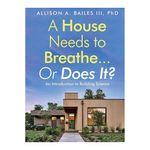Bathroom Lighting with Purpose
Consider style and function when deciding on illumination for your bathroom.

Synopsis: Although bathroom styles differ, lighting a bathroom properly is a key element in its design. Lighting designer Peter Romaniello discusses the most important things to consider when lighting the different areas of a bathroom: vanity, shower, tub, and toilet. He also explains color temperature and color rendering, two features of lighting that are crucial to understand when choosing fixtures and bulbs.
Bathrooms differ in style, from a powder room to a mudroom bath to a suite bath. Yet they all have the same basic functions, and properly lighting those functions is important for the success of the room. Lighting has to address basic needs, such as seeing your face without heavy shadow lines and being able to see the dirt you’re washing off.
Despite their common functions, different baths call for different lighting. For example, a powder room tends to be a very stylistic space because it’s the bathroom that guests use; good facial lighting is still important, however, since those guests may want to check their hair or makeup. On the other hand, a mudroom bath tends to be more of a utilitarian space, where brighter overall illumination is more important. Here, function takes precedence over style.
Kids’ bathrooms can have more gender-specific styles, and they have specific lighting needs depending on the age of the child. Younger children need good lighting over a tub. Teenagers might need vanity lighting similar to that of a suite bathroom for putting on makeup or shaving.
Suite baths are larger and much more of an expression of style. Higher ceilings, vaulted ceilings, and more-expansive room sizes are typical. While lighting must still address the basic needs, suite baths also afford the opportunity to do something special. This can be as simple as installing more-prominent decorative fixtures or adding features such as cove lighting, toe-kick lighting under a vanity, or hidden lighting behind a vanity mirror that splashes light back onto the wall. Homeowners view this room as an oasis, and it’s important to make the quality of the lighting commensurate with the quality of the rest of the room. You don’t want to highlight expensive imported-tile walls in a shower with a cheap light fixture.
Light each station
Bathroom lighting design first has to address the functional needs before it considers what other lighting it will take to make the room visually interesting and to address general lighting needs. Lighting the vanity, the tub and/or shower, and the toilet often is sufficient to provide good overall illumination for the room.
All lights in a bathroom should be dimmable. People don’t usually consider dimming something like a vanity light, but just turning the light full on when you enter the room in the middle of the night can be a shock. Dimmers that slowly fade up and down can be good, especially in a kid’s bathroom. Don’t mix light sources with other loads, however. For example, you can’t put shower recessed lights on a dimmer if they are on the same circuit as an exhaust fan. A good rule is to dim decorative fixtures separately from general lighting such as recessed lights. The fixtures tend to use different light sources (LED, incandescent, halogen, etc.) that require different dimmers. Make sure that any LED or compact-fluorescent bulbs are dimmable.
General lighting is the last to be added, and it is based on factors such as the size of the room, its volume (a factor of ceiling height), and the available natural light. In a small bathroom, lighting the vanity and the shower may be enough. Larger rooms, say 150 sq. ft. or more, probably need general lighting in the center. This can be provided by a decorative fixture or a series of recessed lights. Keep in mind that recessed lights pointed only at the floor will rarely make a room feel open and bright. It is much better to use them to light walls and the objects on the walls.
Vanity

Good facial lighting is critical and requires the light to come toward the face, preferably from both sides. Wall-mounted fixtures to the left and right sides of the mirror provide the best light at a vanity. The second-best location is on the wall above the mirror. However, recessed downlights should be avoided. They tend to cast intense shadows on your face. Wall lights should have some sort of diffuse glass or shading to block the direct glare of a bulb’s filament, but having a 40w candle bulb behind a linen shade on a decorative vanity light will never provide enough light on your face.
Vanity lights can help to reinforce the overall style of the room. Fixtures should complement the vanity mirror and the vanity hardware since these are the closest objects. For example, the finish of the vanity lights should match the finish of the vanity faucet instead of matching the finish of a door handle on the opposite side of the room.
The wall opposite the vanity mirror has a huge effect on how bright the vanity area feels. If that wall is brightly lit, it will make the vanity area feel brighter to the user. If the wall is not lit or its surface is very dark, then the vanity area will feel much less bright.
Backlit mirrors

Backlit mirrors and other mirrors with integrated lighting have become popular. Make sure that these mirrors have lighting that comes outward to light people’s faces. If the lighting only shines back onto the wall behind the mirror, it likely will not provide enough facial light and may make the mirror feel dark in comparison to the wall behind it.

Shower
Recessed lights rated for wet locations are a good choice for showers, but quality is important. If you have expensive, high-quality tile, it would be jarring to have a 1980s-style recessed light with a dropped frosted-glass lens. Your eye would go to that light instead of toward the tile. A better approach is to recess the lens of the fixture at least 1 in. so that it does not draw your attention.
Also, there should be more than one recessed light in the shower, not only for better functional lighting but to more evenly wash light on the tile walls. The back wall can be a critical part of the bath design. If the shower has glass doors or no doors, then its walls are completely visible and a part of the room. The lighting in the shower then becomes as important as the lighting in the rest of the room.
Tub

Lighting needs around tubs vary depending on the type of bathroom. In a suite bath, a tub can be a space for relaxing or reading. The tub and its hardware can be stylish and usually should be lit with wet-location recessed lights. Avoiding glare for a person in the tub is key. Aiming the lights away from the tub user’s eyes, minimizing the light’s aperture with a smaller trim ring, and recessing the light source deeply can all accomplish this.

Kids’ bathrooms are more about playtime and getting clean, so good general lighting is much more important. Tubs in a mudroom bath can be more about washing the family dog or cleaning up quickly after doing yard work. Again, good overall illumination in the room (and tub area) is important. Recessed downlights with good glare control are great solutions.
Toilet
If the toilet is next to the vanity, it typically does not need its own lighting. If it is off in a corner or separated by a wall, however, then specific lighting such as a recessed light may be necessary. If the toilet is in a separate closet, then good general lighting is needed. This area also may require something special, such as lighting for artwork on the wall behind the toilet or a decorative wall sconce.
Color temperature and color rendering
Lightbulb choice is no longer just about matching the wattage of the old bulb. Now, particularly when selecting an LED or CFL lamp, the color temperature and the color rendering index (CRI) have to be selected, and you need to make sure that the bulb can be dimmed. All of this information should be marked clearly on the packaging. If the packaging does not state these simple characteristics, don’t buy the bulb.
Color temperature describes the color of light emitted by the bulb. It can be warm and amber like an incandescent source, or cool and bluish like some daylight bulbs. Color temperature is measured in degrees Kelvin. The lower the number, the warmer it is; the higher the number, the cooler it is. Incandescent lighting is typically around 2700 K, and noon daylight is typically around 6000 K. In a residential environment, the acceptable range for general illumination is between 2700 K and 3000 K.
Color rendering is on a scale from 1% to 100% and refers to how true, or normal, colors appear under a particular light source. The rule of thumb is to select light sources with an 85% or higher CRI.
Color by Kelvin
1. The yellow-orange glow of a burning candle measures about 1800 K.
2. A temperature of 2700 K denotes a warm color such as that produced by incandescents.
3. Temperatures of 3000 K to 3500 K produce a bright white without the yellowish tint.
4. “Cool white” fluorescent lights are in the 4100 K to 4500 K range.
5. Bulbs that are marketed as “daylight” are in the 5600 K to 6000 K range.
Peter Romaniello, LC, owns Conceptual Lighting (conceptuallighting.com) in South Windsor, Conn.
From Fine Homebuilding #263
Fine Homebuilding Recommended Products

A House Needs to Breathe...Or Does It?: An Introduction to Building Science

The New Carbon Architecture: Building to Cool the Climate

Not So Big House


